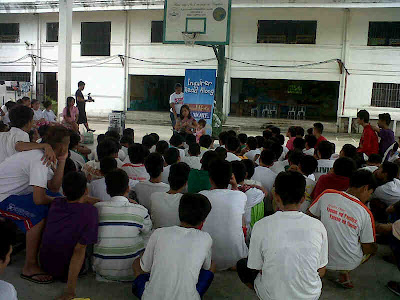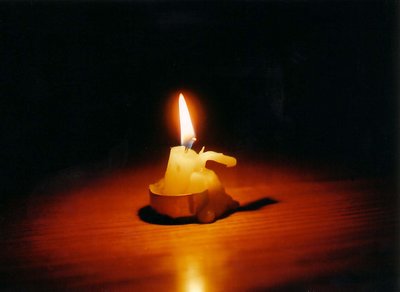Jeric smiled at me when I sat beside him. I smiled back and waited for my turn in the book-reading session. He began asking questions. "Where do I live?" "What will I be reading?" "How old am I?" I was cautious about my answers. To make me relaxed, I asked him one question. "Why are you here?" Ironically, he became the story teller.
Jeric, not his real name by the way, is only16 years old. He murdered his eight-month pregnant mother and 5-year-old half-sister. He shot his sister in the forehead while he stabbed his mother several times along with another 19-year old accomplice. He was also accused of stealing P600 and a cell phone worth P800 from his mother. Robbery with homicide charges were filed by the Naga City Prosecutor’s Office against him. The case is non-bailable.
I was blown away by his story. I don't know if I can still drag myself and carry the task of reading in front of this young people - this young people who committed crime against the law at their early age.
And so I heard my name. I am the second reader of Philippine Daily Inquirer's Read Along session held at Operation Second Chance Center, Brgy. Kalunasan,Cebu City. Partnered with Starbucks-Philippines and Gracie-Q, the activity was the first of its kind in Inquirer's Read-along program history as we will be reading to children in conflict with the law. With this program, it hopes to spread the love for reading to the younger generation.
Recommended by my classmate who works in Sunstar Cebu, I gave the invitation a "Yes!" with no hesitations. It was just reading anyway. I have been reading all my life. I have been reading everything- books, articles, newspapers, novels,etc- all my life. And beside that, it's Christmas season. It would not hurt to spare a time of service, I thought.
And so I went up in front of a big crowd- hundreds of young guys and about less the ten girls beside the pack. It was not easy. I am a stage performer and I underwent Public Speaking trainings but I admit that it was an unexplainable "stage fright" I felt at that very moment.
The God Mercury and the Woodcutter- an Aesop Fable, was the material I was asked to read. The story tells about the encounter of a woodman to the God Mercury. It is a cautionary tale on the need for cultivating honesty, even at the price of self interest.
 |
| The young men of the Second Chance Center lining up to get their share of Starbucks. |
I went on the reading. I tried to translate my words to Bisaya and Tagalog as I was conscious of understanding issues. I crack corny jokes which some managed to laugh. I ask questions and bring them in front to hear their thoughts. I can see them enjoying because they are eager to participate. Their faces animate whenever you move the story forward. I watch their eyes one by one to make sure that I delivered the message across.
The activity culminated with a series of intermission numbers prepared by the center themselves. Starbucks Staff, dressed liked angels, gave refreshments to the attendees later on.
 | |||
| Starbucks Angels prepared mouthful of beverages and pastries for the attendees. Yes, I must say - Sosyal! |
 |
| Inside the Center, they are taught of many things. That includes honing their talents. Dancing is just one of them. |
I bid goodbye to everyone. While the Inquirer team is busy packing, I watched Jeric from a far. While busy chatting with his friends, he suddenly looked back at me, wave his hand, and smiled. From there, I was relieved. Because I know, deep in his heart, that smile is a sign of hope from the values that he learned on that day.














































